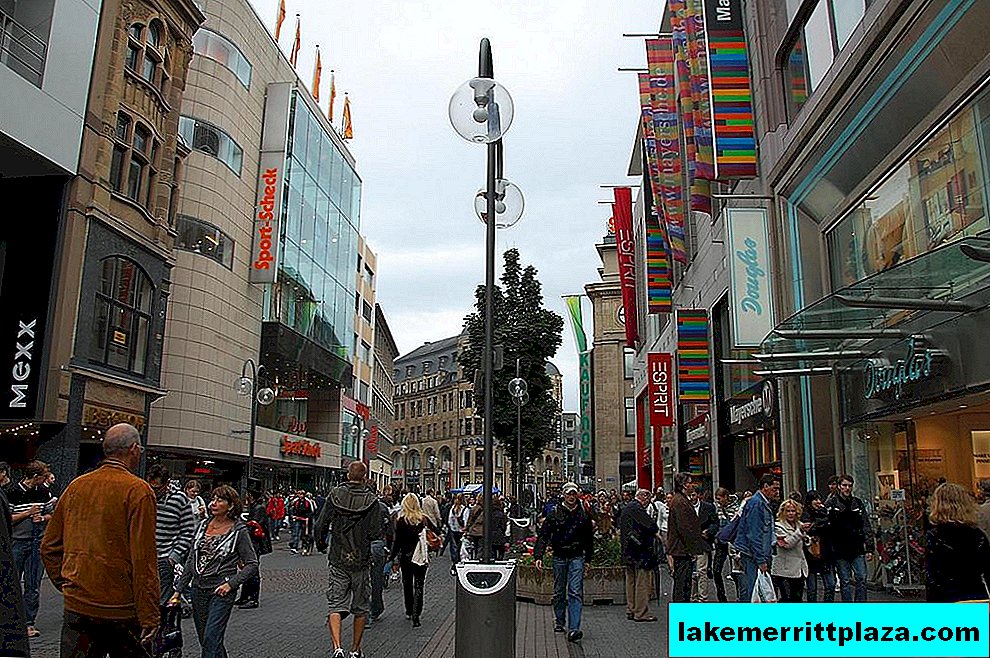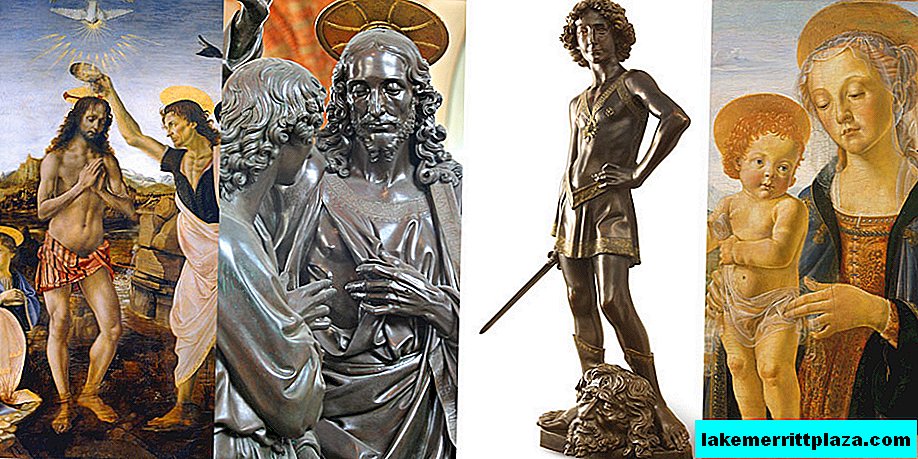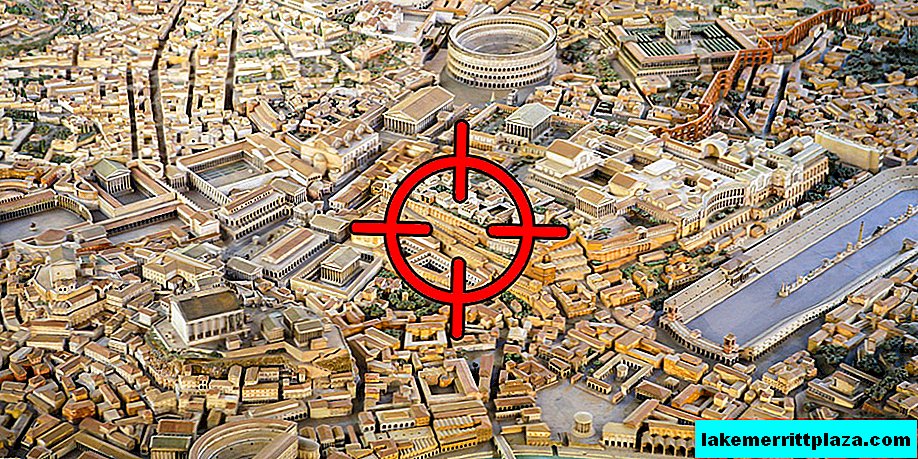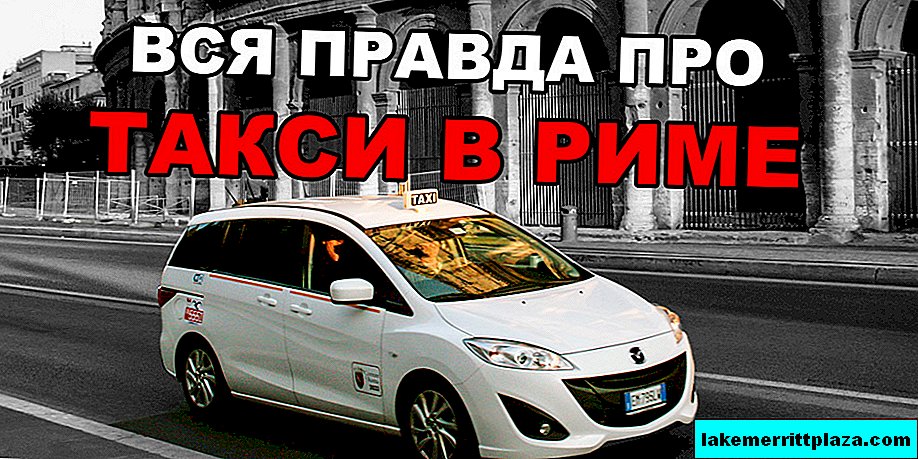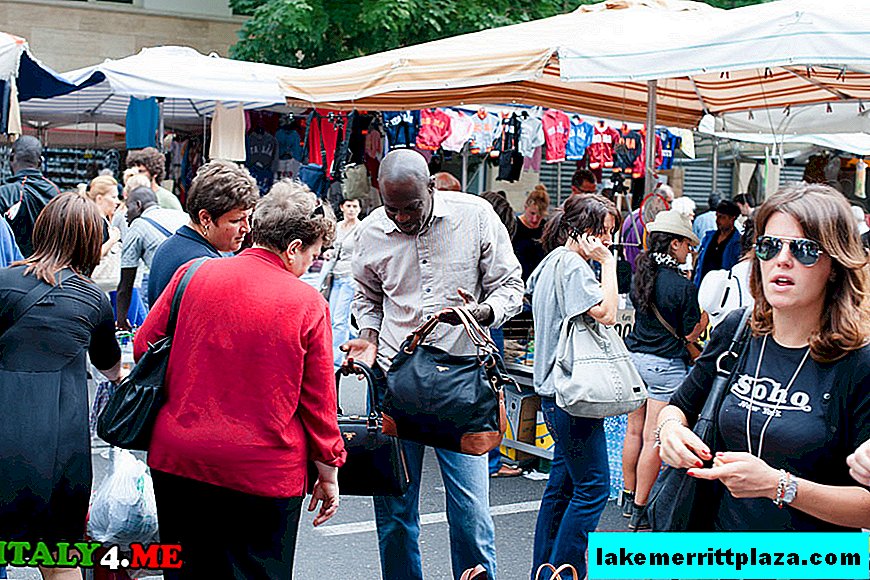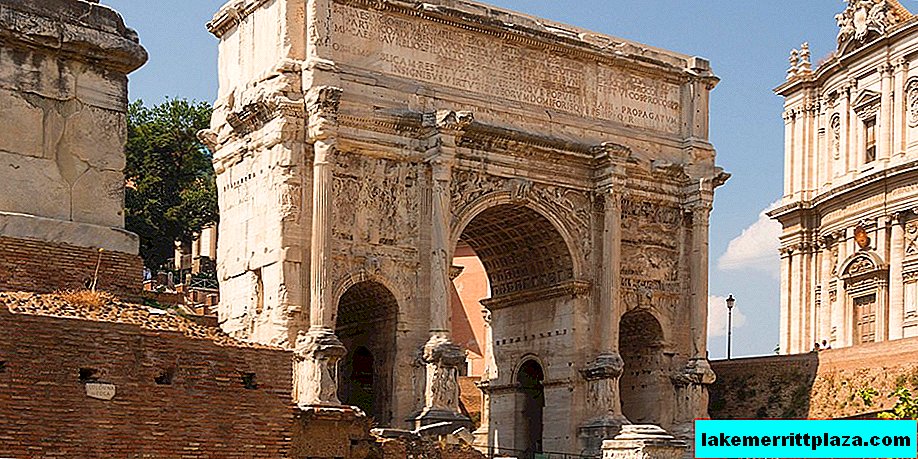Venice is a city of magnificent palaces and picturesque canals, revived fairy tales and romantic lovers. "Serenissima" (serene) - this is what Venice was called in the Middle Ages.

Venice (Venezia), Collin Key
Venice (Venezia) - one of the most beautiful cities in the world, located in the Venetian lagoon. When you hear the name of the city, it comes to mind: narrow winding canals, picturesque bridges, gondolas and gondoliers, house entrances that go directly to the water ... But the description of Venice cannot be reduced to a standard number of tourist sites, the city is unique in everything. Today he appears before us almost as he was 200 years ago, in the last years of his greatness. Tourists come here to see the great city of the past and feel the breath of time.
5 things to do in Venice
- At dawn, come to St. Mark's Square and appreciate its emptiness: there are still no pigeons or tourists. Then leave and return here in the afternoon. The area will be completely different, filled with tourists. With a view of the Venetian patrician, take a seat under the arcade at the table of the Floriant cafe, wait for the sunset and admire the facade of the Cathedral of San Marco in the rays of the setting sun, and then go briefly into it.
- Climb the bell tower of San Giorgio Maggiore and enjoy breathtaking views of the lagoon, city, canals and a long line of people wanting to climb the campaign of St. Mark's Cathedral.
- Cross the Grand Canal to the tragetto (large gondola driven by 2 gondoliers). It is cheap, interesting and fun. Up to 12 people enter the gondola, it’s not accepted to sit, everyone is standing.
- Visit Scuol San Rocco. Tintoretto painted its ceilings and walls. Like in Hitchcock's The Birds, flocks of rabid angels would fly at you from all sides. See how much you stand. Scary!
- Go to the Rialto market, where in one of the departments you will sniff the local hard pecorino, asiago and parmesan cheeses for a long time, choose and finally buy. Then, carefully packing them, go to the Grand Canal, and there, unable to stand it, break the cheese into pieces and eat with pleasure.
When is the best time to go?
About 20 million people visit Venice annually; almost like Paris. Tourists come here all year round, so the prices in summer and winter are almost constant. The ideal months for a trip to Venice are April and October. The flow of tourists falls from November to March.
In March it is still cool - + 8- + 10 ° С. In April-May it is already comfortable - + 17- + 20 °.
Summer is long and hot, the average July temperature is + 23 ° (but with high humidity the temperature is felt higher). There are very, very many tourists. But you can settle on about. Lido and enjoy a beach holiday.
The average temperature in September-November ranges from + 8 ° to + 18 °. In September, you can still swim. And if you guess and come to the first Sunday, you can admire the historical regatta. In October and November it is not hot, it rains and floods occur.
Winters are mild, the average January temperature is + 2.5 °, but there are snowfalls and frosts, a chill wind blows from the sea. The concentration of tourists is slightly reduced. In February, the famous Venetian carnival takes place.
What to see
 Grand Canal
Grand Canal
 Rialto Bridge
Rialto Bridge
 Basilica of Santa Maria della Salute
Basilica of Santa Maria della Salute
 St. Mark
St. Mark
 Doge's Palace
Doge's Palace
 St. Mark
St. Mark
 Bridge of Sighs
Bridge of Sighs
 Santa Lucia Station
Santa Lucia Station
 Peggy Guggenheim Collection
Peggy Guggenheim Collection
 Church of st. Barnabas
Church of st. Barnabas
 Embankment of the incurable
Embankment of the incurable
 Palace Fondaco dei Turki
Palace Fondaco dei Turki
 Cathedral of Santa Maria Gloriosa dei Frari
Cathedral of Santa Maria Gloriosa dei Frari
 Boutiques street
Boutiques street
 Ca Pesaro Palace
Ca Pesaro Palace
 Scuola San Rocco
Scuola San Rocco
 Constitution Bridge
Constitution Bridge
 Basilica of Santi Giovanni e Paolo
Basilica of Santi Giovanni e Paolo
 Cathedral of San Giorgio Maggiore
Cathedral of San Giorgio Maggiore
 Scuola San Marco
Scuola San Marco
 Church of Santa Maria dei Miracoli
Church of Santa Maria dei Miracoli
 Church of Santa Maria Assunta
Church of Santa Maria Assunta
 Johnny Depp Palace
Johnny Depp Palace
 Murano Island
Murano Island
 Santi Maria e Donato Cathedral
Santi Maria e Donato Cathedral
 Burano Island
Burano Island
You can talk about the sights of Venice forever. In fact, this whole city is a historical monument, a living legend. The architectural appearance of the city along with the Venice lagoon is included in the UNESCO World Heritage List. Most of the architectural masterpieces can be seen from the water of the Venetian canals.
Venice Walking Route

Venice itinerary
Take my city walk route. Description here.
Grand Canal

Grand Canal (Canal Grande), photo ana_lee_smith
The Grand Canal (Canal Grande) stretches from Piazza San Marco to Santa Lucia Station. He divides Venice in two, passing through all its regions. Along the main waterway of the city are the ancient palazzo of the Venetian nobility. In front of their porches wooden piles with rings were installed: gondolas tied to them - the main sign of Venice.
The steps of the palaces are washed by the waters of the canal; open arcade loggias stretch along the facades. In the old buildings are hotels, art galleries, offices of government agencies.
Rialto Bridge

Rialto Bridge (Ponte di Rialto), photo by Arturo R Montesinos
Four bridges pass through the Grand Canal. The oldest of them is a symbol of the city, the arch bridge of Rialto (Ponte di Rialto) only 28 m long - built in 1592 on the site of an even more ancient, wooden structure.
Old Customs

Old Customs (Punta della Dogana), photo by Joel
At the beginning of the Grand Canal is the building of the Old Customs House (Punta della Dogana) with a 17th-century tower and a gilded ball crowned with the figure of Fortune. Today, there is an art center.
Basilica of Santa Maria della Salute

Basilica of Santa Maria della Salute (basilica di Santa Maria della Salute), photo Christophe Faugere
Nearby is the baroque church of Santa Maria della Salute (Basilica di Santa Maria della Salute), built by architect Baldassare Longena in 1631-81. in honor of the deliverance of Venice from the plague.
Ca d'Oro

The Golden House (Ca 'd'Oro), photo by François de Nodrest
Among the palaces on the Grand Canal stands the Gothic pearl - the Palazzo Golden House (Ca 'd'Oro - Ca-d'Oro). Today, the building no longer has gold plates that once decorated it, but its openwork facade is considered one of the most beautiful in the city.
St. Mark's Square

St. Mark's Square and Bell Tower, photo by Scott Ingram
Piazza San Marco (Piazza San Marco) is surprisingly elegant. Its three sides are fenced by arched galleries, on the fourth there is a beautiful cathedral. Along the perimeter are ancient cafes; The most famous institution - "Florian" has been operating since 1720. During floods, the area is regularly under water. Two columns of red marble brought from Byzantium in the 12th century open the entrance to Piazza San Marco.
St. Mark's Cathedral

St. Mark's Basilica (Basilica di San Marco), photo natureloving
The ensemble of the square is dominated by the magnificent St. Mark's Cathedral (Basilica di San Marco) - a Byzantine-style temple with five domes, with a facade of arched spans.
St. Mark's Clock Tower

Clock Tower (Torre dell'orologio), photo by Alain Letort
The clock tower (Torre dell'orologio - Torre dell'Oroolgio), installed on St. Mark's Square in the 15th century, is considered a city astrological attraction, an architectural monument of the Early Renaissance.
Prosecution

Prosecutions, photo by chris.eke
Adjacent to the clock tower is the Old Procuratie (Procuratie Vecchie), a beautiful long building with a gallery of 50 arches, which was erected in the XII century and rebuilt in the XVI century. Opposite is a similar building - New Procuratie (Procuratie Nuove), it began to be built in 1582. Today, shops and cafes are located on the 1st floor of the Old Prosecutions; on the upper - offices. The New Procuratios houses the oldest Cafe Florian in Italy.
Doge's Palace

Doge's Palace (Palazzo Ducale), photo by Brian Koprowski
Doge's Palace (Palazzo Ducale) was rebuilt after a 14th-century fire in the Venetian style. The openwork palazzo looks floating in the air, weightless. The walls of the third floor of the palace are covered with colorful marble tiles.
To not stand in line, buy a ticket to the palace in advance on the Internet:
Buy a ticket →Campanile of St. Mark's Cathedral

Campanile of St. Mark's Cathedral (Campanile di San Marco), photo by Colin Reader
On the square stands Campanile (bell tower) of St. Mark's Cathedral (Campanile di San Marco), existing since the 9th century. Its height reaches 98.6 m. In 1902, the bell tower collapsed due to general wear and tear. But it was restored and opened on St. Mark's Day on April 25, 1912. Upstairs is an observation deck overlooking Venice.
Channels

Grand Canal (Canal Grande), photo Christophe Faugere
Venice is a pedestrian city. The historical part is located on 118 islands of the Venetian lagoon, separated by 176 canals and ducts. The city has over 400 bridges. The main highway of the city is the Grand Canal (Canal Grande). Its length is 3.8 km, and its width varies from 30 to 70 m, its depth is up to 5 m.

Canal della Giudecca, photo grapatax
The widest canal of the city is the della Giudecca. Its width is 200 m; cargo boats, water taxi-vaporetto and even cruise liners go along it.
A network of narrower channels permeated the whole of Venice. 160 "sleeves" depart from the Grand Canal. The urban system of islands is connected to the mainland by two large bridges, 4 and 2 km long, with a road and railroad. At the entrance to the city, roads end, tourists' cars remain on the mainland. The role of urban transport is performed by motorboats and river buses.
River transport pass
Venice public transport (ACTV carrier company) includes the vaporetto water transport that runs to the historic center and the islands around the lagoon, as well as buses connecting Venice to mainland areas. Buy tickets in advance on the Internet:
Buy travel card →A bit of history
Venice (Venezia) got its name from the name of the ancient region of Venetia, which in the III century. BC. conquered by the Romans. For several centuries, the peoples who inhabited this land and the rulers who commanded it changed. The Serene (La Serenissima) Republic of Venice under the control of the first Doge was formed in the 7th century. The city of Venice became the capital of the republic.
After the popular uprising of 836, the power of the Doges from hereditary became elective. In 814, Venice gained de facto independence from Byzantium. In 992, she was given a special status - the city received new privileges in the field of navigation and trade. Since the XI century, Venice participated in the Crusades. In the Middle Ages (XIV-XVI centuries), the city became the center of the Venetian Republic with numerous colonies in the Mediterranean Sea. During this period, its architectural appearance was formed. But the growth of the Ottoman Empire in the XVII-XVIII centuries. led to the decline and loss of economic power of Venice.
In the spring of 1797, Napoleon declared war on Venice. The French looted the city, ravaged palaces and temples. Since 1806, Venice has lost the status of an independent state. She was under the rule of France, later - Austria, and since 1866 was annexed to the kingdom of Italy.
A new period of development has begun. Trade relations were expanding, the importance of the port increased, the flow of tourists stretched. The blow to the economy of Venice was inflicted by two world wars. In the years of World War II, underground activists acted in the city, their efforts defeated the garrison of the Third Reich.
Holidays
Residents of romantic Venice love holidays and traditionally celebrate them on city streets.

At the Venice Carnival, photo by Rolando CRINITI
Venice Carnival (Carnevale di Venezia) passes before Lent and lasts two weeks. Celebrate it for a thousand years. Hundreds of thousands of tourists come to see this medieval action every year. In the city these days it is impossible to meet a person without a mask.
Colorful La Sensa - the feast of the Ascension of the Lord with a costume presentation symbolizing the "betrothal of Venice with the Sea", celebrated in May.
Festa della Salute in honor of saving Venice from the plague is celebrated in November. A solemn service takes place in the church of Santa Maria della Salute, and residents install a pontoon bridge from the church to the Doge's Palace.

Venice Film Festival, photo by NikolasMontaldi
The oldest international event in the life of the city is the Venice Film Festival (Mostra Internazionale d'Arte Cinematografica) with the main prize "Golden Lion". It takes place in August-September.
Every two years, the Venice Biennale is held - an art exhibition, a forum of world art.

Vogalonga, photo SBA73
Vogalong regatta is held in Venice in May (Vogalonga). Any vessels may participate in it. The purpose of this event is to express love for Venice and protest against the use of motor boats and the crowding out of gondolas from city canal streets. Today's traditionally curved gondolas are gradually replacing motor boats and small boats.
How to get to the historical part of Venice

Piazzale Roma, photo by Stuart
You can get to Venice by plane, train, bus, car or by water.
The bus arrives at the bus station in Piazzale Roma. The train stops at the main railway station of Santa Lucia near the same square. Here is the only parking lot.
Marco Polo Airport (Aeroporto Marco Polo) is connected to the Marco Polo train station, from which you can get to Santa Lucia Station in 10-12 minutes by train.
Another way, from the airport to central Venice there are buses (Aerobus, No. 4, No. 5), which will take you to Rome Square in 20-25 minutes.
It is convenient to get from the airport to St. Mark's Square by vaporetto, public water transport, its parking is 5 minutes. from the airport. Travel time 1 hour 15 minutes.
In the historical part of the city you can move only by water.
What to see in the surroundings

Juliet's House
Padua is just over 50 km from Venice. This is a good shopping place, the first Botanical Garden in Europe, the beautiful St. Basilica Anthony and Capella degli Scrovegni with frescoes by Giotto.
Visit the pretty town of Vicenza, admire its palaces and museums, basilicas and villas, as well as the work of the architect Andrea Pallallio. Drive to the city 85 km.
Verona is the city of Romeo and Juliet, located 130 km from Venice.
Discount card Venice Riviera City Pass

Venice Riviera City Pass
Very often, resting near Venice, many try to come to see the city for a day or more. But Venice is a very lively city: there are long lines to museums, and time is running out, sights are located at great distances - you can’t get there on foot, traffic is very heavy, and parking is expensive and you still need to find it.
We found a solution to this problem - Venice Riviera City Pass to Venice (single tourist map of the Venice Riviera - Venice)! Make the most of your precious time when traveling to Venice - arrange everything in advance. Just order the Venice Riviera City Pass online (a single tourist card in the Venice Riviera) and you will be fully prepared to visit this wonderful city:
- Skip-the-line entrance to the amazing Doge Museum (Doge's Palace)
- Parking your car in the center of Venice
- Get to know the city on a cruise ship that walks along the canals of Venice and stops near its popular attractions
- 20% discount on everything you want to see in Venice


